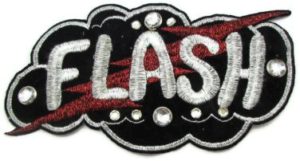
Flash!
Let’s talk about flash fiction for a while, shall we?
You may not have realized it, but June 15 was National Flash Fiction Day here in the USA.
Flash fiction is very short–usually defined as 1,000 words or less (A&A allows 1,250) but still a complete story, where things change and you have interesting characters. I cannot tell you how many “slice of life” flash pieces we get, but the instance is much higher than in longer pieces.
There’s a reason for that. Writing very short stories is hard. Let me give you a few clues on how to write flash more successfully. Each one will come with an example from our archives.
- You’ll probably only have time for one scene. And it cannot be elaborate: keep it simple. Take a look at the 645- word story “In the Bag” by Kit St Germain. A magician and his apprentice are about to go to sleep, and the magician asks the boy a question. As the child thinks about his answer he reminisces and looks all around him. His memories reveal they are somewhere in medieval Italy; his observations let you know they are in a hayloft. When the apprentice decides how to answer the question, you’ve never left the hayloft but everything has changed.
- In flash fiction there is only time to develop one character extremely well, maybe two. No cast of thousands here! Note that in Fran Wilde’s “Welcome Briefing At The Obayashi-Ragan Youth Hostel” the other characters are being spoken to, but never seen. She packs a great deal into 700 words.
- Setting has to be quickly locked in. Desmond Warzel’s “Wikihistory” is set entirely in an internet forum about time travel, so the setting is simply a computer screen. Anyone who has ever participated in an internet forum settles into the frame of mind that invokes.
- It’s useful to tap the reader’s imagination and experience. In James Dorr’s “Nanoflakes,” the science in a child’s breakfast cereal turns him into a dinosaur for some breakfast fun. It takes a darker turn as it makes him want to study science for a rather evil reason. Note that throughout the 1,000-word piece, Dorr relies on the reader’s instant conjuring up of numerous childhood breakfasts of cereal and the rhythm of having to get ready for school. Almost no description is necessary, and almost all of it stems from internal dialog.
- Tap the senses, and emotions! Note how Jon Hansen’s “Goddess” taps sensuality, love, winter’s chill, the mundane of a work day, and the warmth of home.
Since this is about flash, I’ll keep it short. We really need good flash. We pay pro rates for flash. Please hone your craft, and send us your best. (Edited to add: Please wait for our next reading period. Week of August 1!)
Wendy S. Delmater

